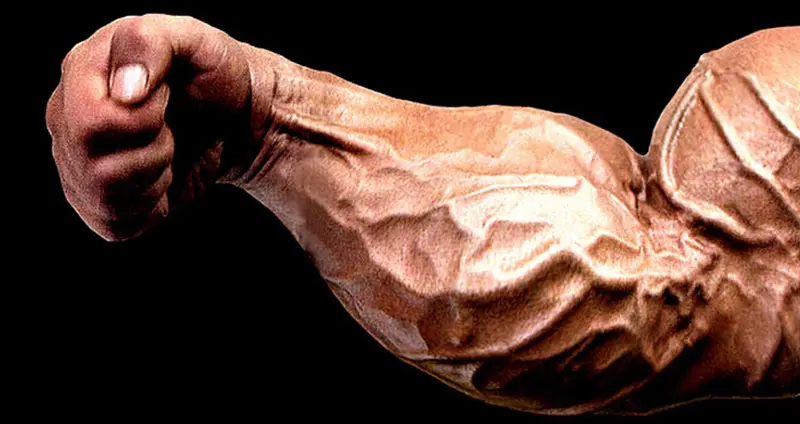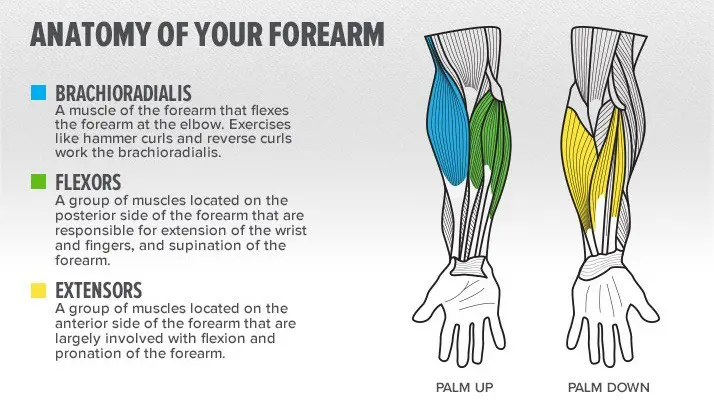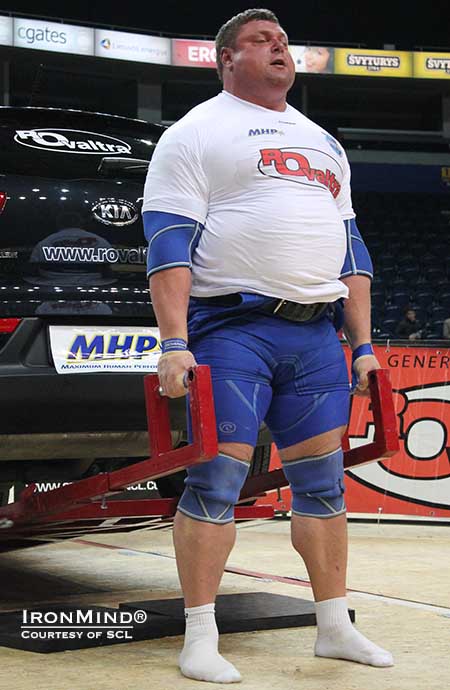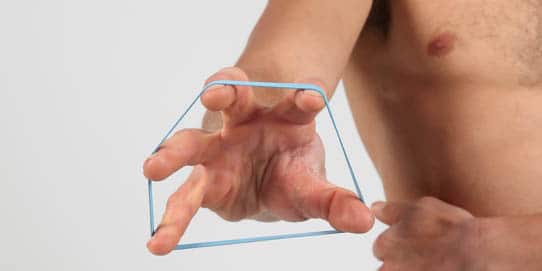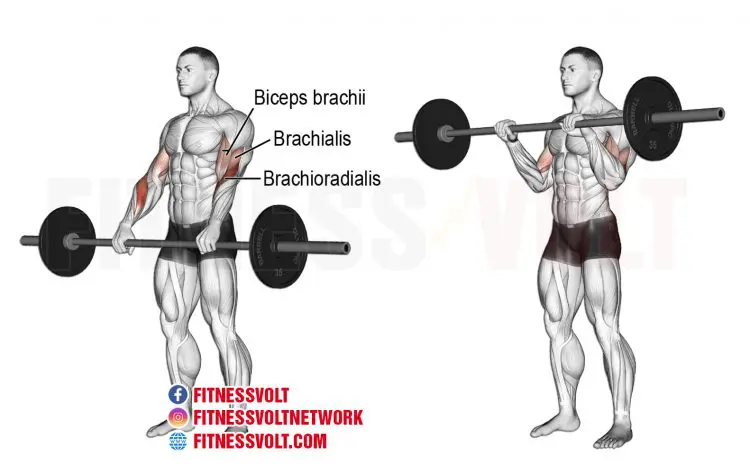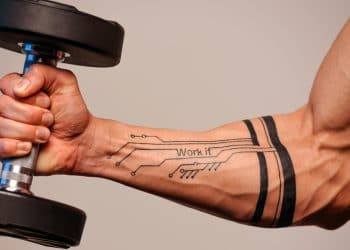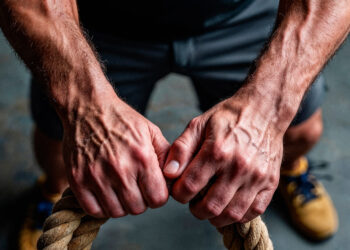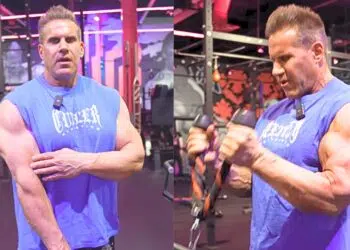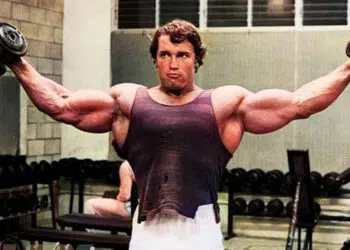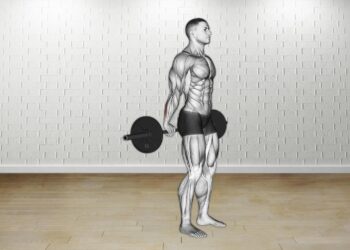When most bodybuilders think about arm training, they usually focus on their biceps and triceps. That makes a lot of sense because these muscles make up the majority of your arm mass.
However, the muscles below your elbow are just as important and are probably on show more often. If you wear an elbow-length T-shirt or roll up your shirt sleeves, your lower arms will take pride of place and may even be one of the first things people notice about you.
Forearms that look like bowling pins are hard to ignore!
ForearmsAs well as being aesthetically pleasing, big, muscular forearms are important when you train the rest of your body too. There are no muscles in your fingers, and your grip strength is dependent on your forearm flexors. A weak grip could limit your performance in essential exercises such as deadlifts, pull-ups, and bent over rows. Yes, you could wear lifting straps, but that’s just a temporary fix to a more serious problem. Build your forearms, and your weak grip will soon vanish.
Don’t hide your forearms under long shirt sleeves. Build your lower arms with these ten best forearm exercises. You’ll be able to give Popeye a run for his money!
Level Up Your Fitness: Join our 💪 strong community in Fitness Volt Newsletter. Get daily inspiration, expert-backed workouts, nutrition tips, the latest in strength sports, and the support you need to reach your goals. Subscribe for free!
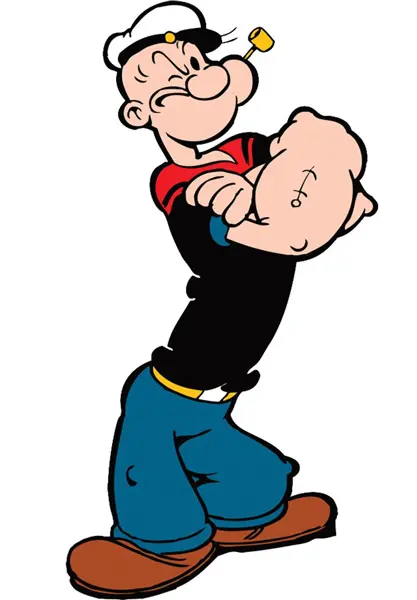
Forearm Muscles Anatomy
Unlike your upper arms, which are mainly made up of your biceps and triceps, your forearms are much more complex. That’s because they control all of your fingers as well as your wrists. Some also cross your elbows too.
Broadly speaking, the muscles of the forearms can be categorized as flexors or extensors. The flexors are responsible for closing your fingers into a fist and curling your wrist downward. In contrast, the extensors open your fingers and pull your wrist upward.
The muscles that make up the forearm are (1):
Flexors: Flexor carpi ulnaris, palmaris longus, flexor carpi radialis, pronator teres, flexor digitorum superficialis, flexor digitorum profundus, flexor pollicis longus, and pronator quadratus.
Extensors: Brachioradialis, extensor carpi radialis longus, extensor carpi radialis brevis, extensor digitorum, extensor digiti minimi, extensor carpi ulnaris, anconeus, supinator, abductor pollicis longus, extensor pollicis brevis, extensor pollicis longus, and extensor indicis.
Do you need to know all these names? Definitely not! But it does serve to illustrate that the forearms are a complicated body part, and you can’t just leave them to their own devices to get bigger and stronger. You need to choose the best forearm exercises and train them hard and often – just like any other muscle group.
The 10 Best Forearm Exercises
Do you know a good forearm exercise from a bad one? No? Don’t worry – we’re here to help! Here are 10 of the best forearm exercises around. Any of these exercises will bulk up your lower arms, increase your hand strength, and add an extra dimension to your physique.
1. Barbell wrist curls
This classic, old-school exercise is an excellent way to build up your forearm flexors and increase wrist strength. With no special equipment required, you can easily add this exercise to your biceps workout to finish off your arm training.
How to do wrist curls:
- Grab a barbell with an underhand, narrow grip. Sit on an exercise bench and lean forward. Rest your forearms and the back of your wrists on the bench, so your palms are facing upward.
- Keeping your forearms flat on the bench, extend your wrists and lower the weight down toward the floor. Open your fingers and let the bar roll down as far as you can without dropping it.
- Close your fingers, and then curl your wrists to lift the weight back up.
- You can also do this exercise with dumbbells.
Important note: Rolling the weight down to your fingertips may cause elbow pain, especially if you do this exercise too often or use too much weight. If you experience any elbow pain, stop short of extending your fingers and just focus on the wrist part of the movement. You’ll still get a great workout but without the discomfort.
Benefits:
- Very easy to learn
- Good for forearm size and finger strength
- Provides a great pump
- Slots easily into any arm workout
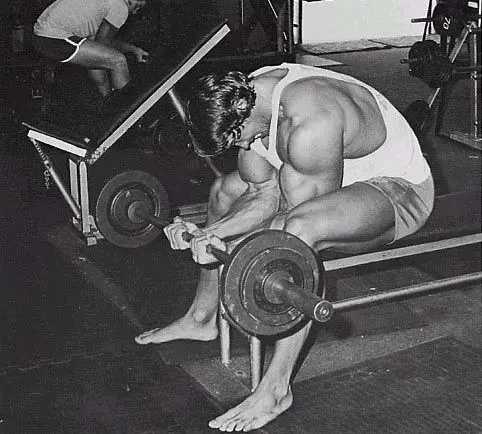
2. Barbell reverse wrist curls
Where regular wrist curls work your forearm flexors, this exercise works the extensors. Training these muscles will not just add size to your forearms; it will also help keep your forearms muscles balanced, which may help reduce your risk of injury.
How to do reverse wrist curls:
- Grab a barbell with a narrow, overhand grip. Sit on an exercise bench and lean forward. Place the underside of your forearms on the bench, so your palms are facing the floor.
- Keeping your forearms on the bench, bend your wrists, and lower the weight down toward the floor.
- Flex your wrists and lift the weight back up. Bend your wrists as far back as you can.
Benefits:
- Another straightforward exercise
- Works the often-undertrained wrist extensors
- Easy to add to your current arm workout
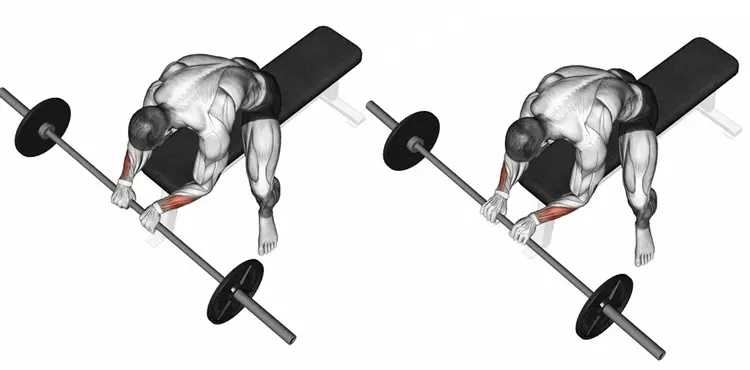
3. Hammer curls
This exercise is often thought of as a biceps exercise, but it’s good for your forearms too. It targets the brachioradialis, which is the largest of the forearm muscles, and the brachialis, which is a forearm muscle that also flexes the elbow. It was a favorite of old-school bodybuilding legend Larry Scott, who had some of the best biceps and forearms in the history of the sport.
How to do hammer curls:
- Seated or standing, hold a dumbbell in each hand with your arms by your sides. Make sure your hands are in a neutral position.
- With your upper arms close to your sides, bend your arms and curl the weights up to your shoulders.
- Slowly lower your weights and repeat.
- You can also do this exercise on a preacher bench, which was another favorite of Larry Scott.
Benefits:
- Works your forearms and biceps at the same time
- Good for lower arm size and grip strength
- Can be done seated or standing
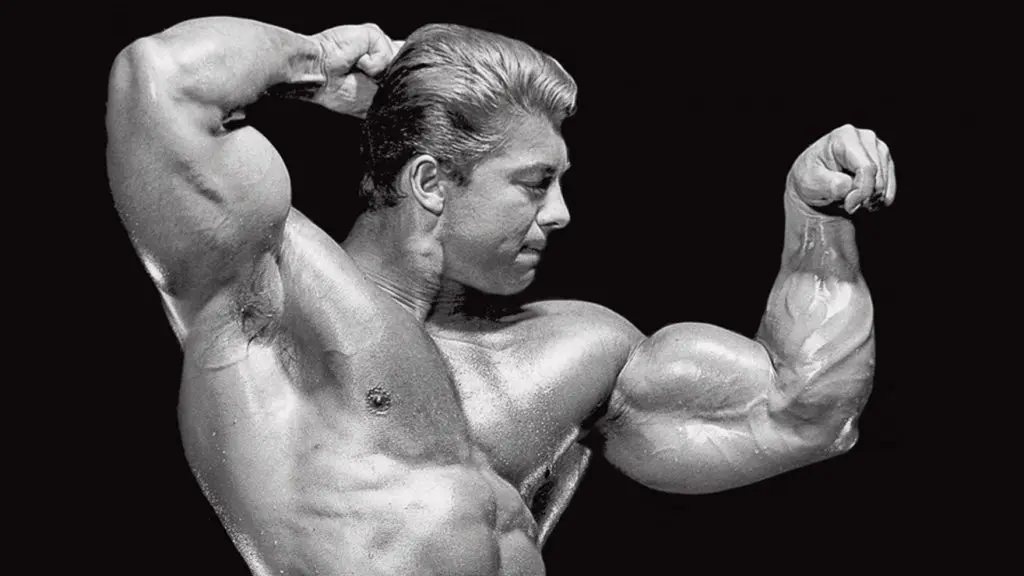
4. Towel pull-ups
Pull-ups are an excellent lat exercise. But, by swapping the bar for two towels, you can turn this popular bodyweight back exercise into a killer forearm workout. This exercise won’t just bulk up your forearms, it will turn your hands into unbreakable vices!
How to do towel pull ups:
- Hang two towels over your pull-up bar. Hold the ends together as tightly as you can.
- Starting with your arms straight and your feet off the floor, bend your elbows and pull yourself up as high as you can. Keep crushing those towel ends together!
- Extend your arms, and then repeat. Can’t do full pull-ups? Use an assisted chin/dip machine.
Benefits:
- A great exercise for climbers and wrestlers
- Do it in place of regular pull-ups
- Great for forearm size and grip strength
5. Deadlift holds
This exercise turns one of the best posterior chain exercises into a tough but effective forearm and grip builder. You may have seen this exercise on the World’s Strongest Man, where competitors lift and hold enormous weights. However, unlike Eddie Hall and his friends, you should not use straps for this forearm exercise.
How to do it:
- Place a loaded barbell on the floor. Stand with your feet hip-width apart, toes under the bar. Squat down and grip the bar with a double overhand grip.
- Straighten your arms, drop your hips, and lift your chest. Brace your abs and slightly arch your lower back.
- Drive your feet into the floor and, without rounding your lower back, stand up straight.
- Gripping the bar as tightly as you can, hold it until you feel your hands starting to fail.
- Before dropping the weight, push your hips, bend your knees, and place the barbell back on the floor.
Benefits:
- Good for your forearms, traps, and core
- Allows you to lift heavy weights
- Can help improve deadlift performance
6. Rubber band finger extensions
Bodybuilders spend a lot of time gripping bars and weights, even more so if they do plenty of forearm training. This exercise specifically targets your finger extensors. While these muscles don’t add a lot to the size of your lower arms, training them may help prevent the imbalances that can lead to problems like carpal tunnel syndrome and repetitive strain injuries (RSIs).
Level Up Your Fitness: Join our 💪 strong community in Fitness Volt Newsletter. Get daily inspiration, expert-backed workouts, nutrition tips, the latest in strength sports, and the support you need to reach your goals. Subscribe for free!
How to do it:
- With your fingers straight and together, take a large rubber band and loop it around your fingertips and thumb. A standard stationary-type band should suffice.
- Open your hand and spread your fingers and thumb apart as far as you can.
- Slowly close your hand and repeat.
Benefits:
- Reduce your risk of injury
- Do this exercise anywhere – even at work or while watching the TV
- Simple and easy to do
7. Pull-up dead hangs
While the deadlift hold (#5) is a great forearm and grip exercise, it’s not necessarily the most practical. For a start, you’ll need access to a barbell and some heavy weights. You’ll also need to be able to do a perfect deadlift. The pull-up dead hang works the same muscles, but it’s an easier exercise to master.
Plus, all you need to do it is somewhere to hang, such as a pull-up bar or even a tree branch. This is a favorite exercise for climbers, who are renowned for their muscular forearms and fantastic grip strength.
How to do it:
- Grip and hold a suitable overhead bar.
- Keeping your arms straight, hang from the bar for as long as possible.
- Drop from the bar just before your grip fails.
Benefits:
- An excellent way to decompress and stretch your spine
- Good for forearm strength and size
- No specialist equipment required
- Easy to learn
[Related: Dead Hangs: Muscles Worked, How-To, Benefits, and Variations]
8. Barbell reverse curls
Like hammer curls (exercise #3), barbell reverse curls are often thought of as a biceps exercise. While this is true, barbell reverse curls are also an effective forearm extensor exercise. Studies have shown us that reverse curls are a very effective way to target the brachioradialis while providing plenty of work for your biceps too (2). It’s nice to know that, with this exercise, you can work your biceps and forearms at the same time, making it very time-efficient.
How to do barbell reverse curls:
- Grip and hold a barbell with an overhand, shoulder-width grip. Place your thumb on top of the bar to maximize forearm activation.
- With your elbows tucked in close to your sides, bend your arms and curl the bar up to your shoulders.
- Lower the weight and repeat.
- You can also do this exercise with a cable machine.
Benefits:
- A good way to finish off any biceps workout
- An effective biceps and forearm exercise
- Can also be done using a preacher bench
9. Plate pinch
This unusual exercise is great for building bigger forearms and an unbreakable grip. Unlike most forearm exercises, your fingers are kept relatively straight, so it’s a good way to add some variety to your forearm building workouts.
How to do it:
- Place two equally sized weight plates back to back.
- With your thumb on one side and your fingers on the other, pinch them together.
- Pick the plates up and hold them for as long as possible, squeezing them as hard as you can.
Benefits:
- No special equipment required
- Good for forearm size and grip strength
- No elbow or wrist strain
10. Wrist roller
Whether you make yourself a DIY wrist roller or use a commercial one at your gym, this old-school exercise is a tried-and-tested forearm and grip builder. A few sets of wrist rolls will leave your lower arms pumped and swollen.
How to do it:
- Hold your wrist roller with an overhand grip. Extend your arms out in front of you.
- Keeping your arms up, roll the rope around the roller, and lift the weight off the floor. Keep going until all the rope/strap is all gathered in.
- Without lowering your arms, unroll the rope and lower the weight back to the floor.
- To take your shoulders out of this exercise, rest your forearms on a barbell set to shoulder height in a squat rack.
Benefits:
- A proven forearm and grip exercise
- DIY wrist rollers are very cheap and easy to make
- An ideal exercise for home use
- Suitable for developing size and strength
Forearm and Grip Training Tips
Get the most from your forearm-building workouts with these useful hacks and tips.
1. Use fat bars and thick grips
Fat bars and grips turn almost any upper body pulling exercise into a forearm exercise. Increasing the diameter of your barbell or dumbbell means you’ll have to work much harder to hold it.
If your gym does have fat bars and you don’t want to buy thick grips, you can achieve the same effect by wrapping a towel around any barbell, dumbbells, or training handle. Plumber’s pipe insulation foam is another good alternative.
2. Prioritize your forearm training
If you are serious about building freaky forearms, you need to make them a training priority. Don’t just do a few wrist curls at the end of your arm workout. Instead, dedicate one or two sessions per week to your lower arms. Because forearms are a small muscle group and they don’t require much energy, you should be able to train them on those days usually set aside for rest.
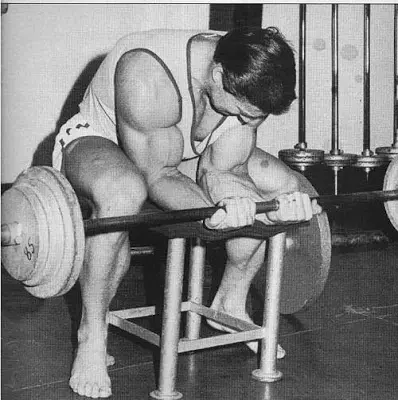
3. Make sure you warm-up
Most forearm exercises use relatively light weights, with deadlift holds being the notable exception. Because of this, you may be tempted to dive straight into your forearm workout with little or no warm-up. This would be a mistake. Forearm exercises invariably involve your wrists and fingers, and, like any joint, you could injure them if you don’t prepare them properly.
This won’t be a problem if you are training your forearms after your back or arms. But, if you are doing a standalone forearm workout, make sure you warm up your muscles and joints before you start.
4. Use chalk
Grip plays a vital role in many exercises, but it’s especially crucial during forearm training. If your hands keep slipping, you won’t be able to perform your chosen exercises properly. Avoid this problem by using lifting chalk to keep your hands dry.
No chalk? Just remember to wipe your hands on a sweat towel, so they are dry at the start of each set.
5. Minimize your use of lifting straps
If you want a strong grip and muscular forearms, you need to use your gripping muscles as often as possible. Using straps takes work away from your lower arms and are best avoided. By all means, use straps for your heaviest, most important sets. But, other than that, rely on your natural grip the rest of the time.
Frequently Asked Questions
Do you have any questions? We’ve got the answers! If you can’t find the answer you want below, drop us a line in the comments section, and we’ll get back to you as soon as we can.
How often should I train my forearms?
Most people should train their forearms once per week. If you already have decent forearm development, train your lower arms after your regular arm workout. But, if you really want to pump up your forearms, train them once per week in a standalone workout. Remember, too, that your forearms get a workout whenever you train your back or biceps, so avoid working them two days in a row as that could lead to overtraining.
Some bodybuilders have massive forearms without training them; why is that?
You are right. Some bodybuilders get enough forearm training stimulus from exercises like pull-ups, rows, and deadlifts. Others have to work very hard to increase the size of this muscle group. It all comes down to genetics, and some bodybuilders are more blessed than others. If you have naturally big forearms, you are one of the lucky people. But, if your forearms aren’t as muscular as you’d like, build your workouts around these ten best exercises, and they will grow!
Can I train my forearms at home?
Most definitely! Armed with little more than a wrist roller and some handgrip springs, you should be able to train your forearms at home. Other good at-home forearm exercises include pull-up dead-hangs, rubber band finger extensions, and plate pinches.
Are there any other benefits to forearm training?
Strong forearms and a good grip will improve your performance in almost every exercise you do. Your wrists will be more stable for bench presses and overhead presses, and you’ll be able to do more reps or use heavier weights when you do biceps curls, pull-ups, and deadlifts. Muscular forearms are also useful in sports – from wrestling to climbing to tennis. This small and often neglected muscle group is actually critical!
Wrapping up
The forearms aren’t the most glamorous muscle groups; that title probably belongs to the biceps or the pecs. But, when properly developed, it’s one of the most impressive. It’s also the muscle that people are most likely to see when you are wearing a T-shirt. Don’t leave your forearm development to chance. Instead, train them hard and often, and using the best forearm exercises around.
References:
1-PubMed: Mitchell, Brittney; Whited, Lacey (2020), “Anatomy, Shoulder and Upper Limb, Forearm Muscles”, StatPearls, StatPearls Publishing, PMID 30725660. https://www.ncbi.nlm.nih.gov/
2-PubMed: Muscular coordination of biceps brachii and brachioradialis in elbow flexion with respect to hand position https://www.ncbi.nlm.nih.gov/

